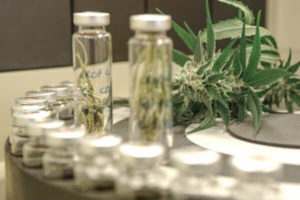 It has become apparent in various cannabis testing facilities and various laboratories (some dealing with cannabis, others engaging in microbial and/or analytical chemistry) that sample preparation is probably the least understood aspect in a laboratory.
It has become apparent in various cannabis testing facilities and various laboratories (some dealing with cannabis, others engaging in microbial and/or analytical chemistry) that sample preparation is probably the least understood aspect in a laboratory.
The purpose of both cannabis sampling and sample preparation for analytical purposes is to map the results to the real world (or the limited universe that the sample represents) as closely as possible. While this may be a task that is complex in many cases, non- the-less an honest attempt must be made.
As an example, consider when a laboratory receives a cannabis flower. The first stop after logging the sample into the Laboratory Information Management System (LIMS) should be the microbiology section. Ideally, the sample will have been taken in the most careful manner so as not to introduce microbial (or chemical) contamination that is not intrinsic to the sample.
Sterile techniques are required on the laboratory’s part in the handling of the sample. After weighing the requisite mass, the sample preparation begins. With a cannabis flower, as with most samples, microbial growth should be assumed to be throughout the sample.
To place the sample in a sterile diluent, let it sit, and then vortex the sample is not sufficient. This approach causes false negatives and allows a passing product that possibly should have failed into the public domain. The sample needs to be macerated to expose as much surface area as possible.
The food industry uses a stomacher machine for this purpose as do some accredited cannabis laboratories and the point is to expose the surface area to allow the microbial population to be assayed as representatively as possible. In food microbiology, almost always the food is diluted to 1:10 dilution (1 part of food in 9 parts of sterile diluent) and then homogenized by a variety of instruments.
When sampling and preparing dilutions to the plate, bacteria should be considered as particles, not a solute in a solvent at infinite dilution. When a 1-mL aliquot is combined with a 9-mL dilution blank, the probability of transferring bacteria is much higher than when 150 μL is transferred into 1,350 μL to obtain a 1:10 dilution.
The take-home message is that the sample preparation in the cannabis laboratory is an extremely important step and the better the preparation, the more reliable the results, assuming protocols are carried out as verified and written.
Let us know what you think.




Responses